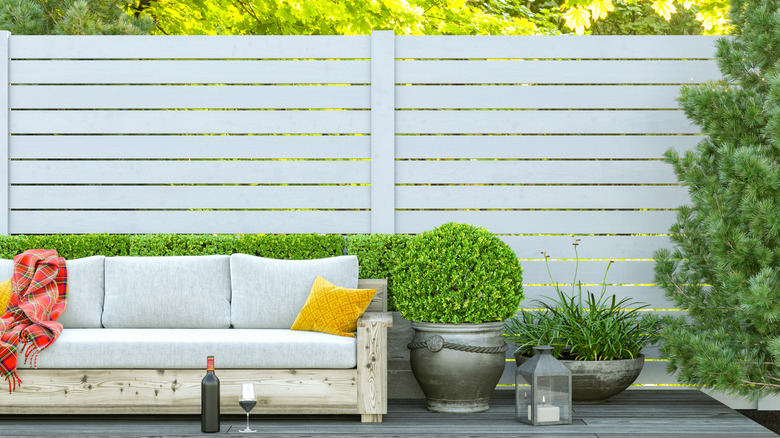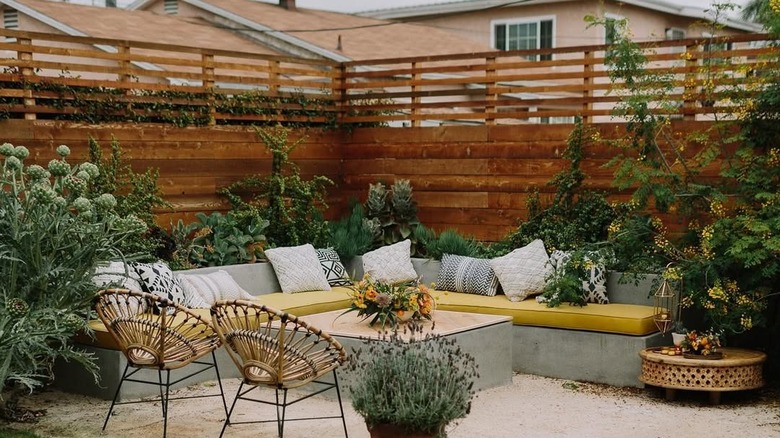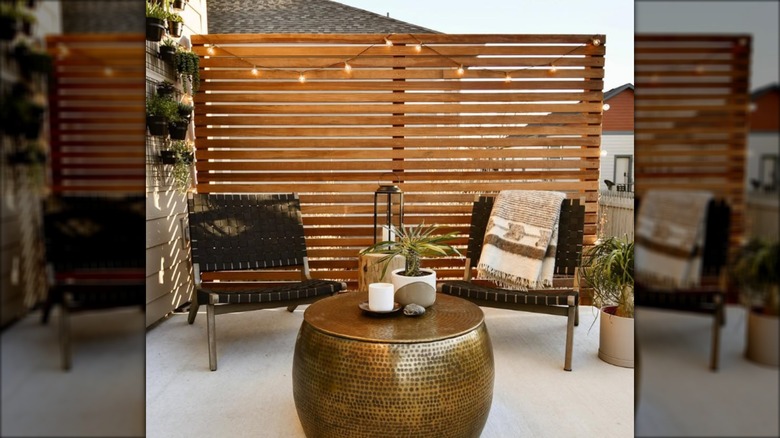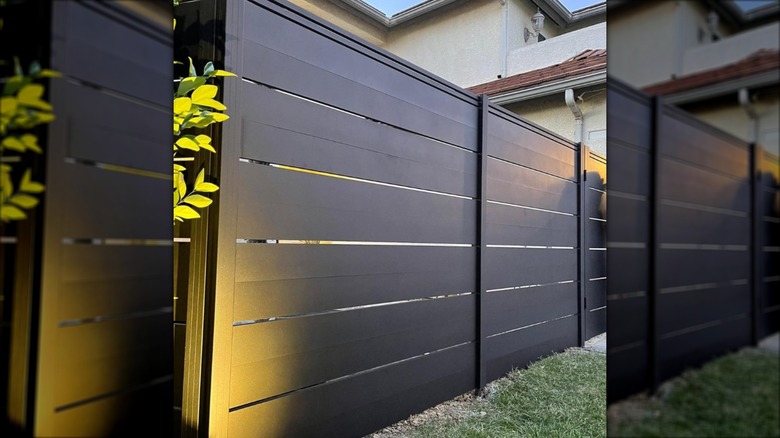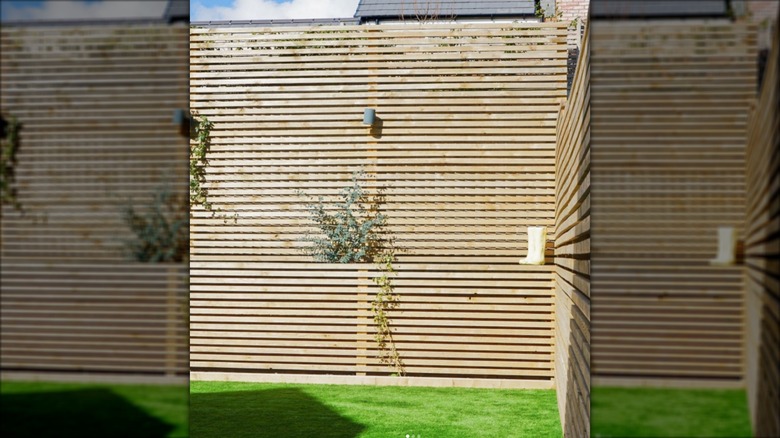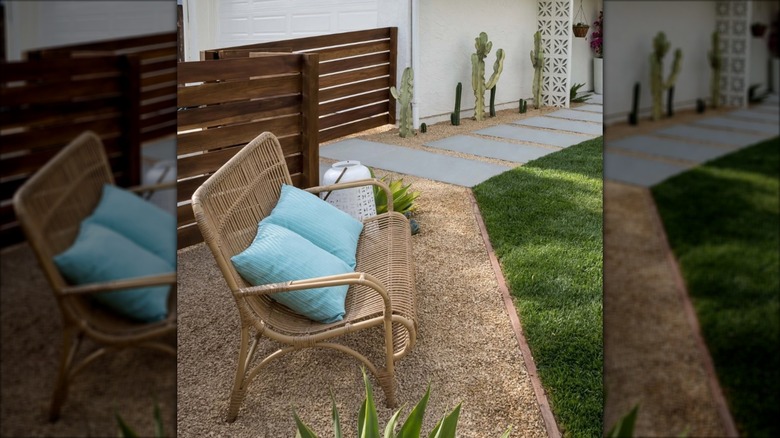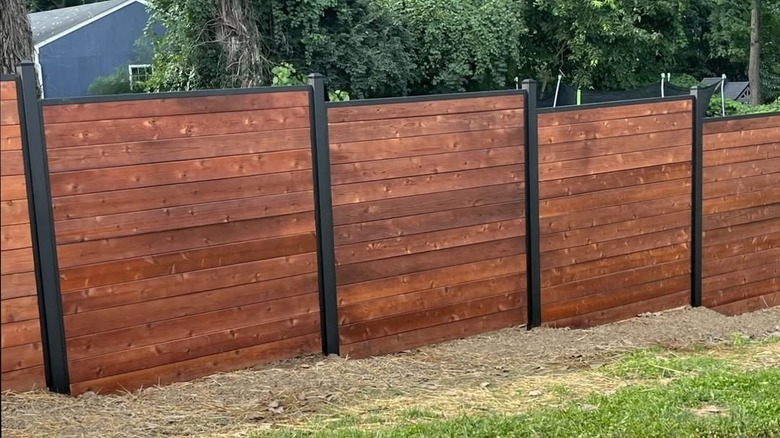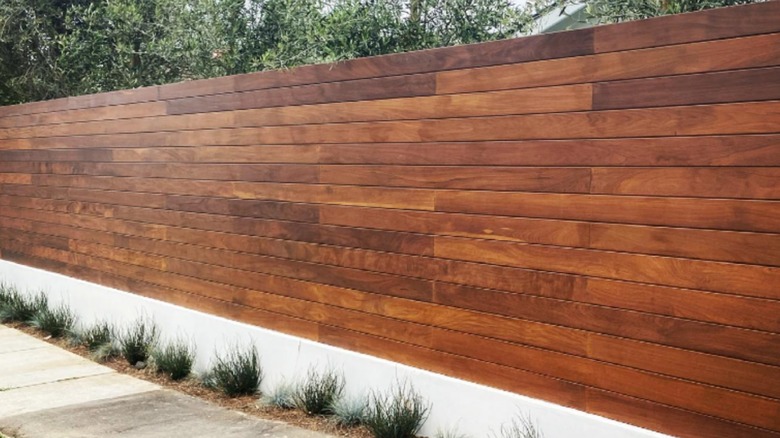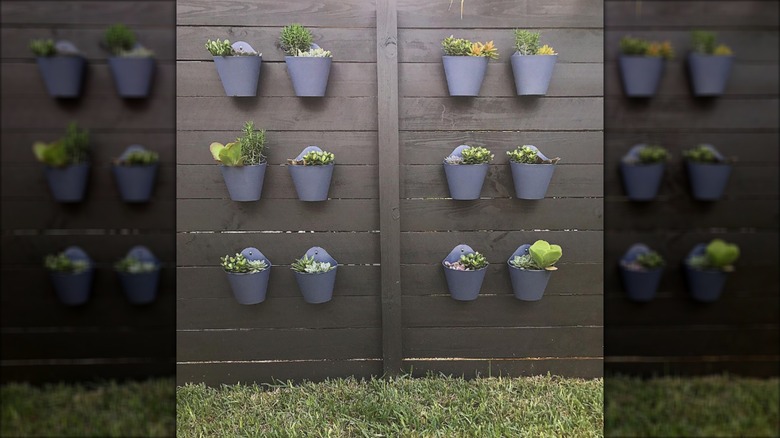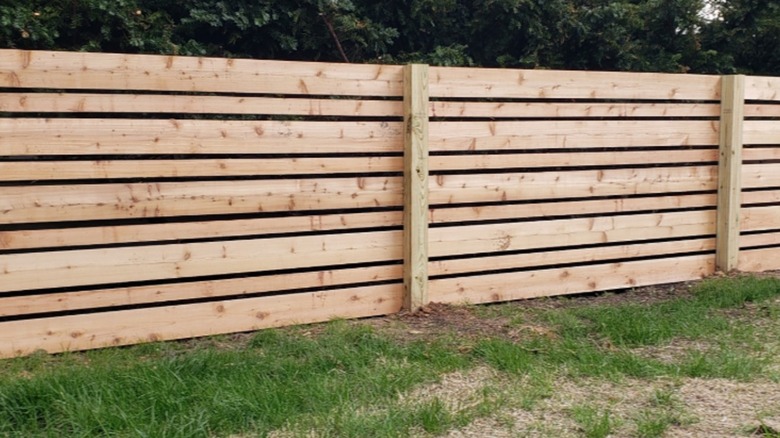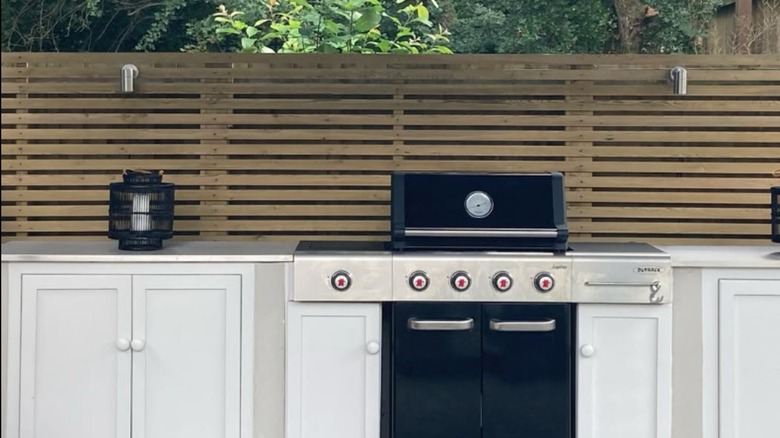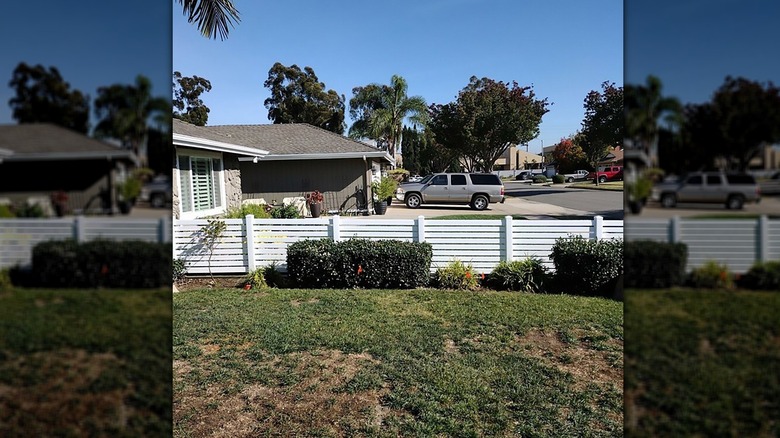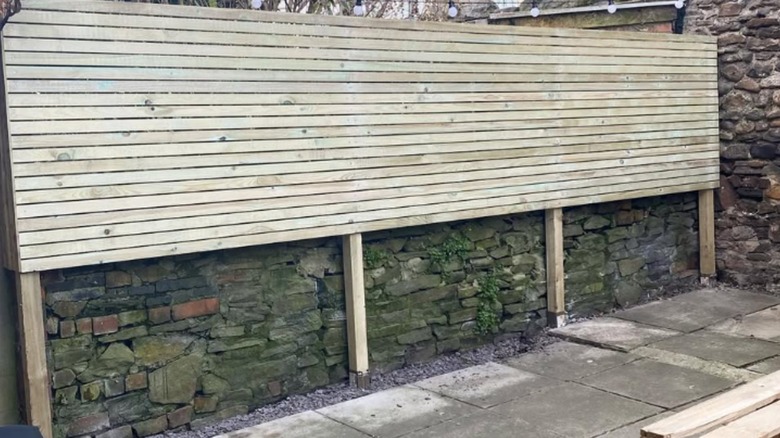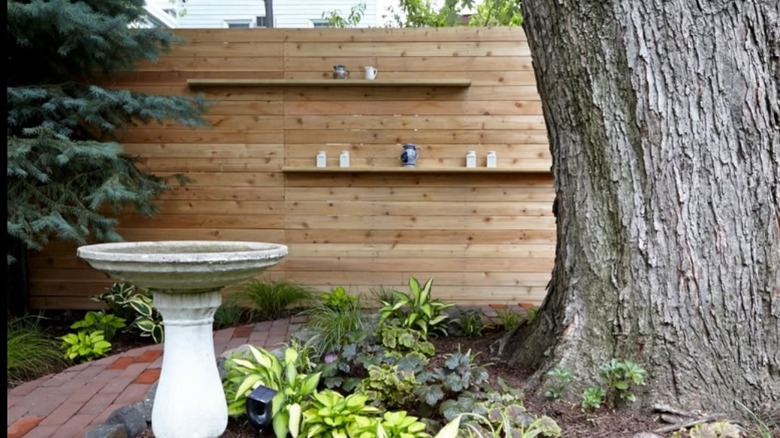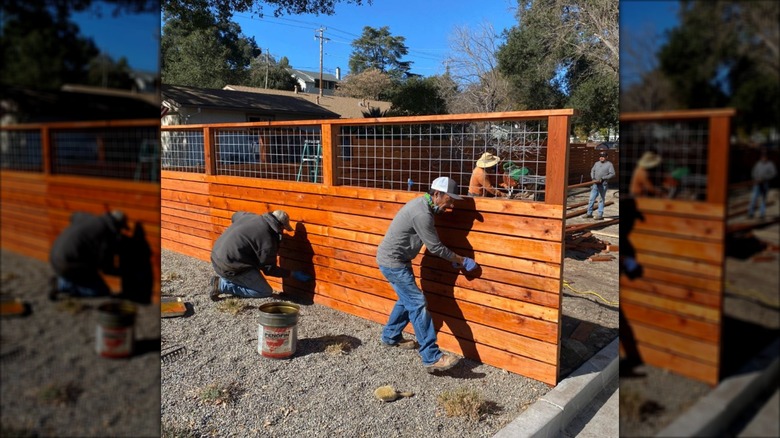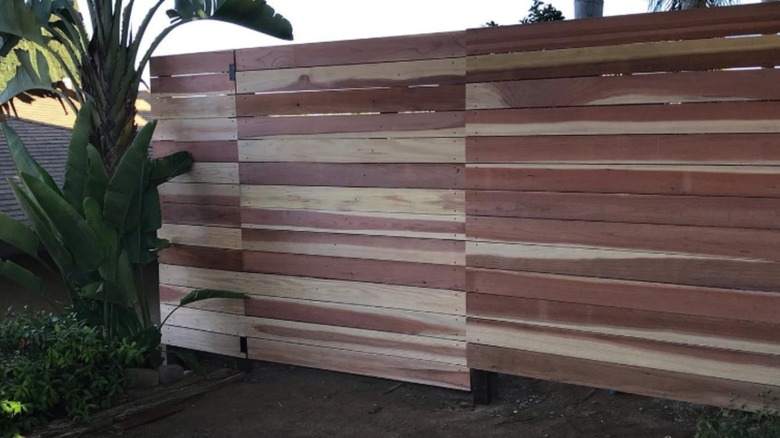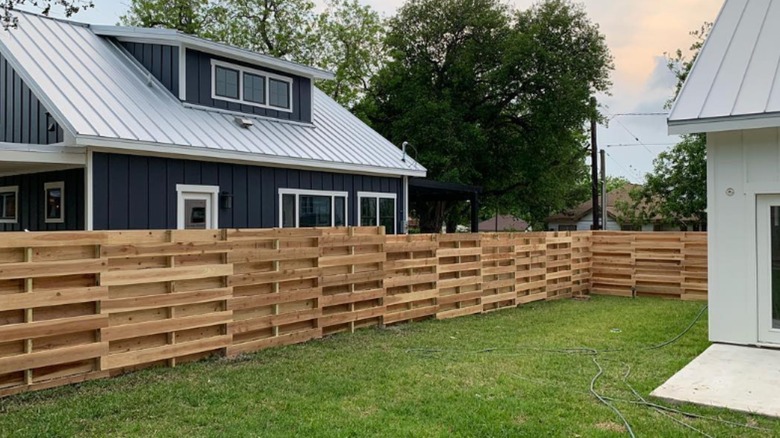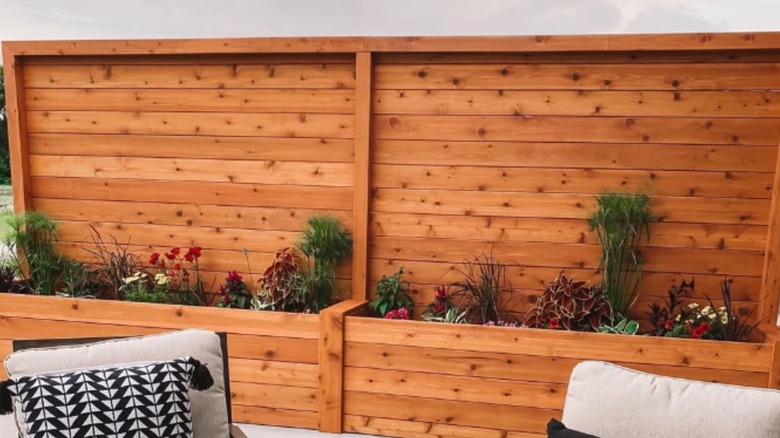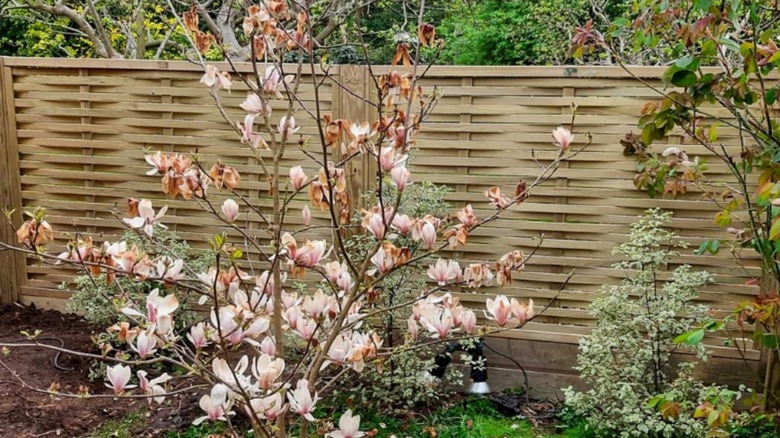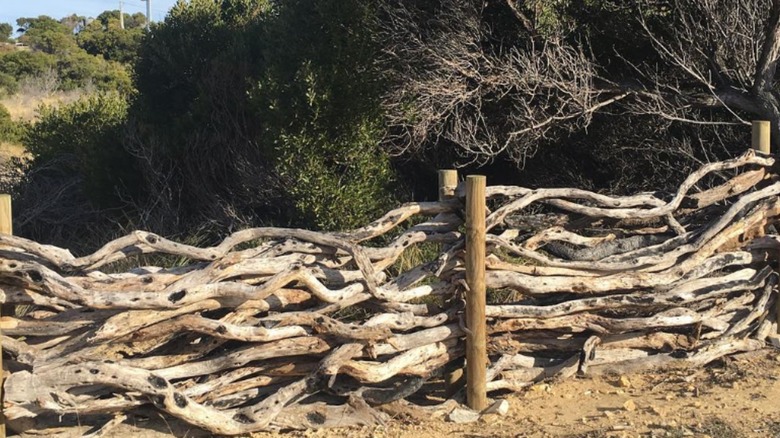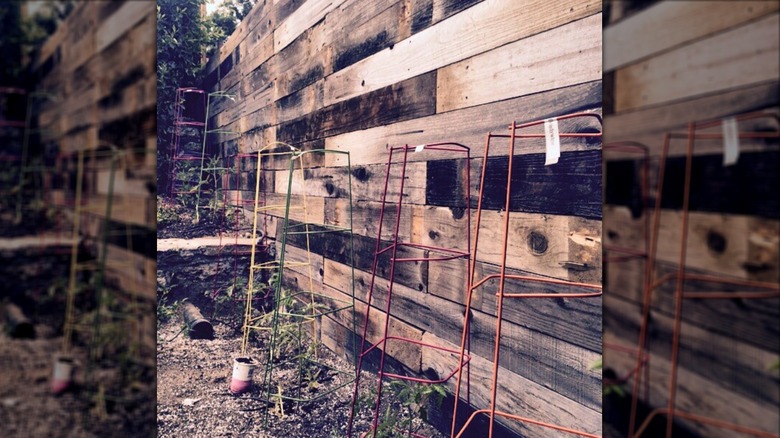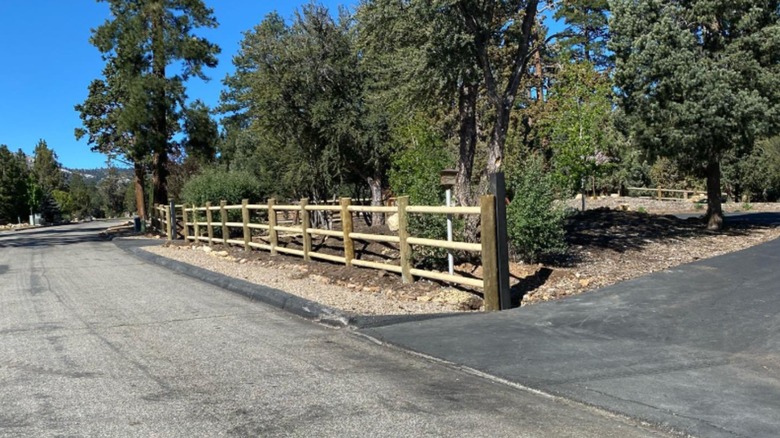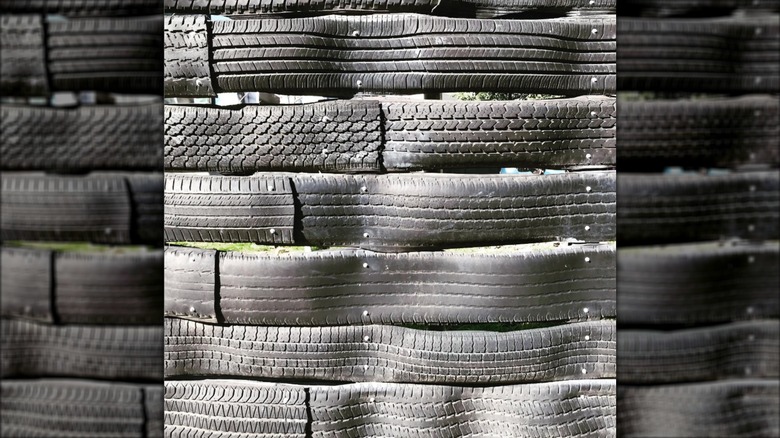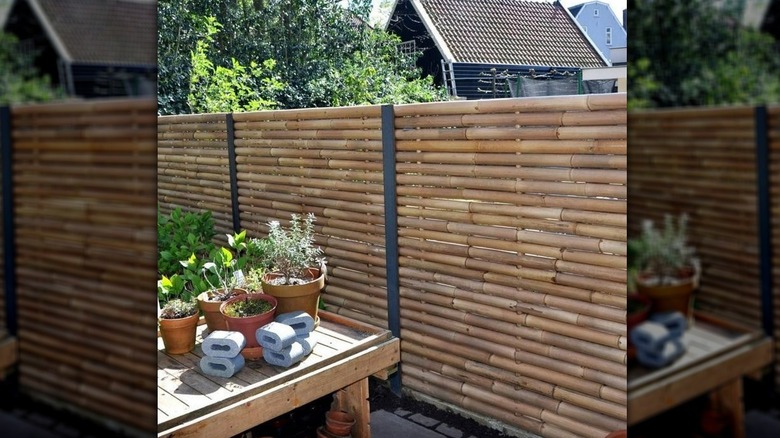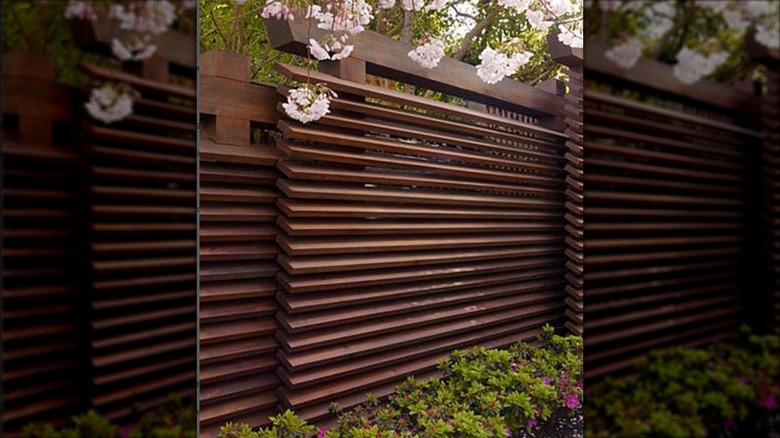24 Beautiful Horizontal Fence Ideas To Add Privacy And Style To Your Yard
Choosing the right fence for the front of your home or your outdoor living spaces can be challenging, with all too many options available in terms of material, size, price point, and aesthetic. While traditional wooden picket fences are the standard for many installations, particularly if you want height and privacy, another alternative may often be overlooked. Horizontal fencing, with the planks installed parallel to the ground instead of perpendicular, comes in a similar array of creative options and provides a fresh take on traditional fencing, whether you're looking for a new spin on a classic like the ubiquitous white wooden fence or something more varied and sculptural like salvaged wood or driftwood fencing.
If you are wondering which is best for your home, horizontal vs. vertical fencing, it usually depends on style preferences and needs. Horizontal lines of fencing can be great for giving a more expansive look to the front of your home and your outdoor spaces, drawing the eye along the length of the fence instead of upward. Horizontal fencing can also complement more low-slung homes like ranch and prairie-style builds. Since they usually involve a raised support across the bottom, a horizontal design can also be a more durable alternative if you live in a moist climate that wreaks havoc on planks where the grain ends of the wood touch wet ground. Because horizontal fencing is unique and stands out, it can be a great way to instantly boost your curb appeal.
Open-top fence
Horizontal fences can be designed to be more open or more closed with privacy and blocked views in mind. You can have the best of both worlds for a stylish and private yard with a more fence that is open on the top, but also more closed down near the ground to block your neighbors or unsightly views. The visual effect is of a higher fence, but the more open top prevents it from looking too much like a solid wall of wood.
Patio panels
Horizontal wood fence panels are perfect for adding a focal point, sense of enclosure, or a bit of extra privacy to your yard's patio. While a vertically oriented fence backing such a small area may look unfinished, the horizontal design presents a more polished look. You can opt for a more open slatted version that gives the illusion of a contained outdoor room, or a solid wall of planks that offer privacy, wind protection, and noise buffering from the surrounding area.
Aluminum horizontal fence
While wooden horizontal fences are very popular, you may want to try an aluminum version as an alternative. Aluminum planks are often more durable, easier to care for, and offer greater security than wooden ones. They come in a number of colors to match your home's exterior palette and can last for decades. Though the installation costs may be higher, aluminum will save you money in care like painting, refinishing, and sealing over the long term.
Trellis fence
Horizontal fencing with gaps between the planks can make great trellises for climbing and descending plants or flowers. It might be trickier for plants to grip onto a horizontal fence, so if you want the long, sleek aesthetic appeal of horizontal slats along with the vibrant greenery of climbing plants, make sure to leave space in-between planks for plants to "grab" on. You can also add a stretch of trellis paneling to the inside of the fence.
Low-slung wood fence
Horizontal fencing that is low to the ground can be a great way to create separation in areas of your yard without necessarily blocking air flow or views. Unlike a low vertical fence, the horizontal orientation gives the illusion of wider and vaster space, even for defining small areas like a fire pit or seating area. It's also great for fencing around flower beds and raised garden plots. Horizontal fences can create an effective barrier for wildlife that is still safer than vertical posts with pointed spikes that may hurt animals trying to climb over.
Graduated height fencing sections
Horizontally-oriented fences can look much more polished and intentional when installed on hilly areas with ascending or descending segments. While the vertical planked sections call attention to their unevenness when installed at various heights and draw the eye to the top, a horizontal fence, especially when capped off with a sleek metal frame, has a more subtle gradation and provides a streamlined look, following the stepped line of the hill.
Closed wooden fence
Closely-wrought planks can look stunning when applied horizontally, granting the highest amount of privacy, safety, noise reduction, and wind protection. This especially true for beautiful and sumptuous woods, which show variation in shade and coloring that resembles a finely constructed wood floor when placed close together. The effect is also very lengthening, which means it can make your outdoor spaces or entire fenced-in yard look wider and longer than a vertical fence.
Hanging garden fence
A horizontal fence can make a functional and attractive background for an attached container garden, allowing you to grow greenery and flowers in containers that are secured to the planks. While this design approach can work with vertical fences, the horizontal orientation can give you more flexibility in the size of planters, baskets, or boxes, which do not have to fasten to skinny vertical supports.
Horizontal fence with varying slat widths
If you're looking for some more visual interest to add to your fence, opt for a horizontal fence that includes planks of alternating widths. This is also a good compromise if you are undecided on whether you want wider or narrower planks for your fencing. While the wider planks provide more privacy than skinnier ones, the space around the smaller-width ones still give you some sight lines and allow light to get through. The result is a funky striped pattern that will set your fence apart.
Outdoor kitchen backsplash fence
With the rising trend of outdoor kitchens, horizontal fencing can make a great outdoor backsplash fence. Since it runs with the same orientation as the counter, it can look much more intentional than a vertical fence in the same spot. It's also great to add baskets, bins, and other hooked accents for decor or extra storage near the grill and sink.
Classic slatted fence
Turn the traditional white picket fence on its side. This is an understated way to make your house and yard stand out while still sticking to a traditional look that won't ruffle feathers in your neighborhood. While classic, natural wood tones can look beautiful, painting the wood with water sealant paint or opting for a water-resistant material like vinyl will help you retain your classic look while adding durability.
Half-wall fence
If you have an existing concrete or stone wall surrounding your property or areas of your yard, you might be looking to add a bit more height and privacy. While a vertical fence placed on top may look awkward and ungainly, horizontal planks can look much more streamlined, allowing you to still see and appreciate the original wall underneath. You can even drive vertical supports into the ground and allow the fencing to sit slightly in front of the wall, great if it's a shared barrier or uneven on top.
Fence with shelves
Horizontal wood fences are perfect for adding floating shelves for decor and plants. This can be great if you have a small outdoor patio or garden area with seating and want to create an outdoor living area with playful and creative decor. Shelves created in the same wood as horizontal planks can make the shelves look like they are a natural part of the fence.
Wire and wood fence
Another great option for allowing more visible sightlines near the top of the fence but a more closed feeling near the ground is to top your horizontal fence with a wire grid. This hybrid variety of fence can be great if you want to keep pets or children in the yard, or would like privacy for low seating, but still want to be able to see beyond the fence easily when standing.
Multi-toned wood fence
Another great way to add visual interest to a horizontally-oriented fence is to use different wood finishes and textures intermixed. This can mean different cuts from the same lumber (like pieces with bark and pieces without) or using entirely different woods entirely. For more variation, you can vary the size of the planks as well to create a fence that becomes a stunning focal point in your yard. The result is an eclectic and artistic-looking modern fence that shows off the wonderful patterns of different kinds of wood.
Wood pallet fence
One of the most common repurposing projects for old wood shipping pallets is creating fencing, whether from disassembled wood pieces or from entire intact pallets. You can save a lot of time and expense in building your fence with pre-assembled pieces that are well-constructed and durable (after all, they are made to support high-weight loads). You can paint the wood pallets for a seamless look, though many pallets have subtle color variations in wood that look charming as-is.
Planter box fence
Horizontal fences look especially sweet and rustic when combined with planter boxes, either placed along the bottom or nested in the top. You can do this along an entire fence line or in small areas to add some greenery to a patio or outdoor seating area with raised beds that are easier to work in than ground-level beds. This is a great two-in-one project that allows you to use up extra wood from your fencing endeavor.
Woven wood fence
For a personal and curated look, opt for a woven fence instead of traditional slats. The flexible slats are woven through the vertical supports, resulting in a rich and textured look that fits cottage-style homes and gardens perfectly. Also known as "basket-weave" fences, these structures are inspired by the wattle fencing first made using bendable twigs to fence in farm animals in rural parts of Europe and Great Britain.
Driftwood fence
Driftwood fencing, while a little more bespoke and expensive to create due to rarer materials and trickier construction, can be a beautiful way to create a horizontal fence with a natural look that blends in with the landscape perfectly. You can opt for a more dense and woven look like above, or create a more loosely-wrought fence with pieces of driftwood attached horizontally to form rails.
Salvaged wood fence
A great eco-friendly source of wood for fencing can be lumber salvaged from lumber yards, construction projects, or architectural salvage warehouses, which when placed together, can create a beautiful patchwork effect on a horizontal fence. This fence format lends itself particularly well to using these pieces, which can vary significantly in length or size, allowing you more flexibility in placement as you build the fence with one layer on top of another.
Log fence
An ages-old way of making fences, this classic look can be especially charming for more rustic and woodland homes, offering definition and separation without blocking views. You can use whole wood trunks or large branches, or opt for raw halved slabs, which can give the fence a great sense of texture when the bark of the trees is left on.
Upcycled rubber fence
This unique variety of fencing is made from recycled tires, making it both visually unusual and eco-friendly in construction. For more privacy, opt for pieces of upcycled rubber in a tight weave, or go for a looser knit that is more open. You can buy fencing installed by ECO-WALL or make your own with deconstructed tires you have on hand or find at a rubber recycling center.
Horizontal bamboo fence
Bamboo fences with a horizontal layout are a unique way to create lightweight, eco-friendly fencing perfect for creating privacy on patios, porches, and balconies. While bamboo fencing is usually installed vertically, you can turn it on its side for a fresh look that still has all the same tropical style with a lot of textural variation between pieces.
Louvred wood fence
A louvred fence is one way to add a sense of depth and dimension to a fence. The tight and slightly slanted slats not only provide privacy when viewed from outside, but still allow some visibility from within. You can create a simple and stylish wall of thick louvered slats for a chic contemporary look or a fence that looks like window shutters with thinner slats perfect for more cottage-style yards.
